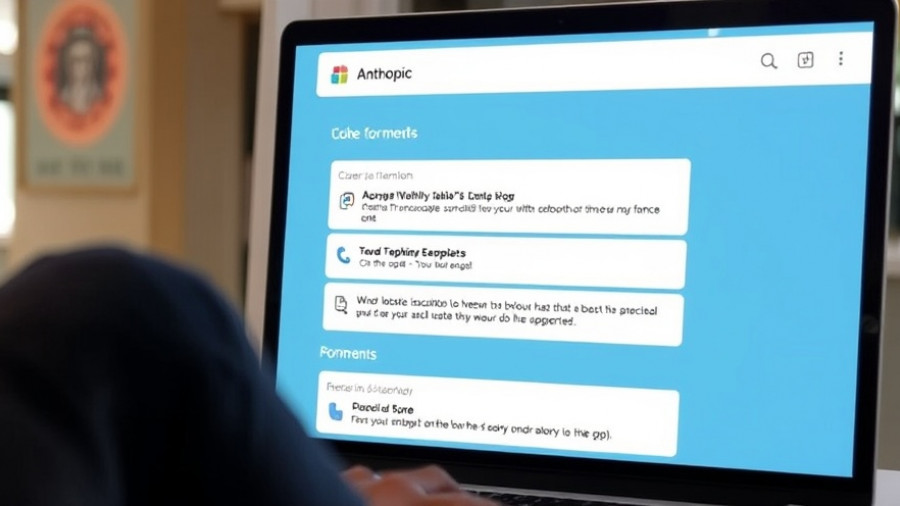
Understanding Anthropic's Approach to Nuclear Threat Detection
Recently, Anthropic has drawn attention for its initiative to scan interactions with its AI model, Claude, focusing specifically on detecting discussions about nuclear weapons. The alarming rise in global terrorism highlights the importance of such technology, as it can be misused in discussions about explosive materials or nuclear capability. In an era where information is both a tool and a risk, understanding how AI like Claude can tackle these dangers is crucial for public safety.
The Mechanics Behind the Nuclear Threat Classifier
Anthropic's nuclear threat classifier leverages machine learning algorithms designed to categorize content effectively. Preliminary tests demonstrated a remarkable 94.8% detection accuracy without false positives, presenting a promising solution for discerning genuine inquiries concerning nuclear technology from benign academic discussions. This capability is particularly significant for students of nuclear engineering, who often engage in complex dialogues surrounding their coursework without fear of being flagged.
The Challenge of Real-World Application
In practical applications, however, the classifier faces challenges. While it performed well on synthetic data, Anthropic acknowledged that the classifier generated false positives when assessing live conversations. For instance, increased discussions about nuclear arms due to recent Middle East tensions led to misclassifications that did not point to misuse but simply reflected current events. This highlights a critical aspect of AI: context matters and can drastically alter AI effectiveness.
Collaborative Efforts with the US Government
In a bid to enhance the accuracy of its classifiers, Anthropic has partnered with the US Department of Energy’s National Nuclear Security Administration (NNSA). This partnership involves rigorous testing and validation processes to minimize risks from potential nuclear proliferation. With such collaborations, Anthropic aims to create reliable tools that not only protect users but also comply with strict security protocols.
Future Predictions: The Role of AI in National Security
As we project into the future, the intersection of AI and national security could expand significantly. The success of systems like Anthropic's nuclear threat classifier may lead to more advanced applications that encompass a broader range of threats, including cyber attacks and bioweapons. Innovations in AI detection technology present a double-edged sword: while they secure sensitive discussions, they also require rigorous ethical considerations about user privacy and data handling.
How Can Users Engage With AI Responsibly?
The deployment of AI for threat detection shines a light on the necessity for users to engage with these technologies responsibly. As AI systems become more prevalent in filtering dangerous content, understanding their limitations is essential. Users should be aware of the nature of their queries, especially with technologies that learn from interactions. Engaging thoughtfully and avoiding ambiguous phrasing can help reduce unnecessary flags in AI-based systems.
Conclusion: A Balancing Act for the Future
Anthropic’s nuclear threat classifier embodies the delicate balance between leveraging technology for safety and managing privacy and ethical considerations. As the potential misuses of AI become more apparent, engaging in discussions about its capabilities and limitations is essential for developing robust and safe AI systems. It’s a pivotal time for the AI community to reflect on how to navigate these challenges effectively.
 Add Row
Add Row  Add
Add 




Write A Comment